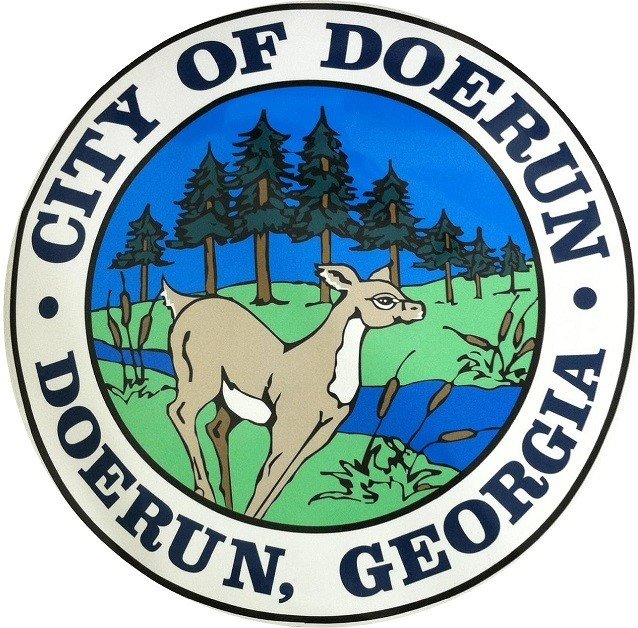EDDIE SEAGLE: Christmas rose adds holiday color
Published 2:40 pm Saturday, December 1, 2018

- Eddie Seagle is a Sustainability Associate, Golf Environment Organization (Scotland), Agronomist and Horticulturalist, CSI: Seagle (Consulting Services International), Professor Emeritus and Honorary Alumnus (Abraham Baldwin Agricultural College), Distinguished Professor for Teaching and Learning (University System of Georgia) and Short Term Missionary (Heritage Church, Moultrie). Direct inquiries to csi_seagle@yahoo.com.
“It is December, and nobody asked if I was ready.” Sarah Kay.
“Colored lights blink on and off, racing across the green boughs. Their reflections dance across exquisite glass globes and splinter into shards against tinsel thread and garlands of metallic filaments that disappear underneath the other ornaments and finery. Shadows follow, joyful, laughing sprites. The tree is rich with potential wonder. All it needs is a glance from you to come alive.” Vera Nazarian.
Welcome December with all of its seasonal décor and grandeur! With only 23 days left until Christmas Day, make the best of every moment while you enjoy friends and family amongst the weather, decorations, and celebrations. Everyone seems to be in the hurry-up mode during this colorful time of the year, rushing from shop to shop for gifts and from party to party with friends. Simply slow down and share some quiet time with one another, and take a moment to visit a homebound friend or family member who is simply asking for your presence, attention and love. Make it a December to remember in your heart!
Holiday plants are everywhere during this special time of the year. One such plant is the Christmas rose which actually isn’t a true rose at all! Surprised! In fact, it is a hellebore (Helleborus niger) and it may not flower as early as Christmas since it is a mid-winter flowering plant. The hellibores comprise approximately 20 species of herbaceous or evergreen perennial flowering plants in the family Ranunculaceae. Many of the species are poisonous. Even with names such as Christmas rose and Lenten rose, the hellebores are not even closely related to the rose family (Rosaceae). However, the Christmas rose does add holiday color to our cheerful and joyful environments during this time of the year.
Even so, Helleborus niger is an awesome plant with white, bowl-shaped flowers and lime green centers that will brighten a moist, shady location in late winter and early spring. The typical size is about 12 inches in height and 18 inches in spread. This hellebore (the Christmas rose) is a renowned English plant and a true Christmas flower. Also called the snow or winter rose, it blooms in the middle of winter in the mountains of central Europe. The Christmas rose was the perennial plant of the year in 2005.
Legend links this plant with the birth of Christ and a little shepherd girl named Madelon. As Madelon tended her sheep in a snow-covered field one cold winter night, wise men and other shepherds with their gifts for the Christ Child passed by her. The wise men brought the rich gifts of gold, myrrh and frankincense while the shepherds came with fruits, honey and doves. Upon realizing the occasion, poor little Madelon wept at the thought of having nothing for the newborn King. In response to seeing her tears, an angel came and brushed away the snow exposing the most beautiful white flowers with pink tips appearing as roses. She collected several blooms in her arms and went to see the Christ Child. She was overjoyed with complete fulfillment as the Christ Child turned away from all the rich gifts and reached out his holy little hands for the flowers she collected and offered. To her, this was truly a gift from the heavens to cheer her true and innocent heart (thus the recognition of the Christmas rose).
The Christmas rose is without fragrance but can be planted with winter honeysuckle to provide an inviting aroma. Its flowers don’t do well in a vase as a cut arrangement but simply cut the flowers without any stems and float them in a shallow bowl of water for an intriguing presentation that will be talked about for months.
Since hellebores do not like acid conditions, be sure to maintaining a more neutral to alkaline pH in the planting media. They do well under deciduous trees and against the bare trunks which allow light penetration during their flowering period. Planting them in containers and pots is also a good idea and they can be moved from location to location when in bloom. Also, they do well as a houseplant in the interior-scape and in the landscape as a cultivated herbaceous perennial.
All parts of this plant are poisonous by ingestion or dermally through the skin and or eye irritation. Symptoms of poisoning include the burning of mouth and throat, salivation, vomiting, abdominal cramping, diarrhea, nervous symptoms, depression, and skin irritation (contact with cell sap). Protoanemonin, the toxic component, is poisonous if large quantities are consumed, but the skin irritation is minor lasting only a few minutes under normal exposure conditions.
The Christmas rose is the most widely used and the most spectacular of the hellebores. It is easier to grow than the more popular poinsettia and this flower is being promoted as the new and improved holiday potted plant which can later be transplanted into perennial beds for lasting enjoyment.
Hybridization between the species has greatly expanded the colors available including slate grey, light black, deep purple, plum, rich red, pinks, yellow, white and green. The outer surface of the sepals is tinged in green and as the flower matures it becomes greener. The individual flowers will remain intact for a month or more. Recent breeding programs have developed double- and semi-double flowering hellibores. Also, many new releases are disease and insect tolerant, including deer and rabbit tolerance.
May the results of your holiday efforts be photo opps and memory-makers for seasons to come. Select awesome seasonal plants for the upcoming holidays. Enjoy the Christmas lights in your area. Also, plan a road trip to enjoy Christmas lights with all that splendor and beauty of the season.
Keep your hanging baskets and potted plants refreshed with water and food. Remember to feed and water the songbirds. Give your pets the care they need and do not allow them to have their way with holiday decorations. Be aware and think safety and responsibility! Also, be on lookout for children playing and bicyclists riding along the streets and roadways throughout our communities. Pay attention to school buses and respect their stop signs and other signals as they transport our children to and from school and home. And remember to safely share the road with motorcycles. Drive alert and arrive alive. Don’t drive distracted or impaired, and don’t text while driving.
Help the homeless every chance you get. As you receive blessings, always pay them forward. Pay for a stranger’s meal the next time you are eating out! Let’s keep everyone safe and secure while we enjoy this CHRISTmas season. May your decorating efforts provide you with an atmosphere filled with ornamental appeal and spiritual contentment this season.
“Let the word of Christ dwell in you richly as you teach and admonish one another with all wisdom, and as you sing psalms, hymns and spiritual songs with gratitude in your hearts to God. Whatever you do, whether in word or deed, do it all in the name of the Lord Jesus, giving thanks to God the Father through Him.” Colossians 3:16-17.
Eddie Seagle is a Sustainability Associate, Golf Environment Organization (Scotland), Agronomist and Horticulturalist, CSI: Seagle (Consulting Services International), Professor Emeritus and Honorary Alumnus (Abraham Baldwin Agricultural College), Distinguished Professor for Teaching and Learning (University System of Georgia) and Short Term Missionary (Heritage Church, Moultrie). Direct inquiries to csi_seagle@yahoo.com.





